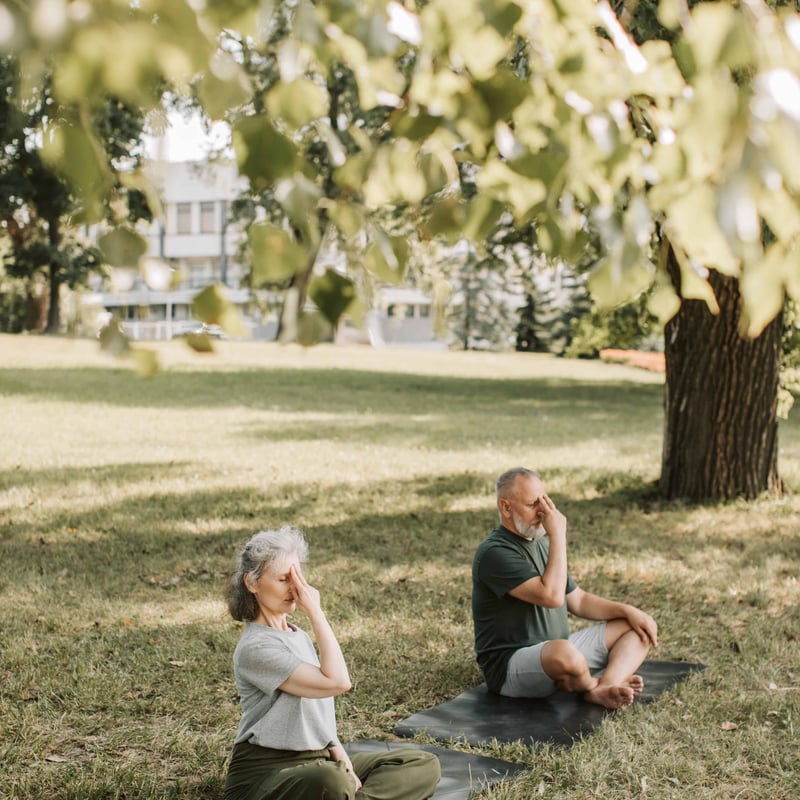Last updated on April 24th, 2024 at 08:41 am
What is the difference between pranayama and breathwork?
The Power of Breath
Close your eyes for a moment. Imagine you’re feeling overwhelmed, your heart pounding, and your thoughts racing a mile a minute. Now, take a slow, deep breath in through your nose, feeling your belly expand. Hold for a count of three, and then slowly release the breath through pursed lips, – feeling – the tension melt away with each exhale. This conscious control of your breath is a powerful tool – it’s breathwork, and it can significantly impact your physical and mental well-being.
But there’s a whole world within breathwork, and one specific practice stands out: pranayama. Pranayama (प्राणायाम), a Sanskrit word translating to “life force extension,” is a specialized form of breathwork with ancient roots in yogic traditions. While both pranayama and general breathwork involve focused breathing, pranayama goes a step further. It incorporates specific techniques designed to not only calm the mind but also influence our energy and overall sense of well-being.

Pranayama: A Yogic Approach to Breathwork
Pranayama (प्राणायाम), a Sanskrit word translating to “life force extension,” is a specialized form of breathwork. It goes beyond simply being aware of your breath and delves into specific techniques designed to influence the flow of prana. In yogic philosophy, prana is the vital life force energy that animates our bodies and minds, believed to be the animating force behind all living things. According to yogic texts, prana flows through invisible channels called nadis, and blockages in these channels can lead to imbalances and dis-ease.
Pranayama’s roots lie deep within the yogic tradition. Ancient yogis believed that mastering pranayama could not only enhance physical and mental well-being but also unlock spiritual potential. They observed the close connection between breath and energy – how shallow, rapid breathing often accompanied agitation, while calm, deep breaths fostered a sense of peace. They believed that the quality and rhythm of our breath directly impacted the flow of prana throughout the body. Through pranayama, they sought to harness this connection, using specific techniques to regulate the flow of prana and achieve a state of optimal balance. This practice aimed to not only improve physical health and mental clarity but also cultivate a sense of inner peace and spiritual awakening.

Pranayama
First of all, we need to clear up the air – pranayama is breathwork. But, in this case, it represents a controlled sequence different from the breathwork. With pranayama, you control the pace, and you control the time of each exercise. Let’s take a look at some examples so we can clear things up even further for you:
- Simha pranayama – this is when you inhale, and once you start exhaling, you release your tongue out as you release your breath too. It is an excellent technique if you want to exercise the facial muscles.
- Ujjayi pranayama – this is when you constantly exhale as if trying to fog up a glass. The result of this is your muscle within the throat to clear up.
- Alternate nostril breathing – this is when you inhale through one nostril and exhale through the other. It is a great exercise for those who want to alleviate stress and anxiety.
These are the types of exercises you can do anywhere, though it is recommended to do them when you are in your special relaxation corner to focus on yourself. Pranayama is one way of getting rid of all distractions around you. It is often used in yoga and meditation classes.


Breathwork
Here is what gets people confused on the subject of pranayama vs. breathwork. You should define breathwork as any type of breathing exercise as long as you have full control over your breath. There are a few techniques out there, some of them include:
- Box breathing – this is when you slowly inhale and exhale and hold your breath for 4 seconds.
- Pursed lip breathing – this is when you bring your lips together like you are about to blow out a candle and inhale and exhale for at least twice as long as you would normally do.
- Diaphragmatic breathing – this is when you breathe from your belly. It is a regular breathing technique.
You can improve your physical and emotional health with the help of these breathing exercises. They have been proven to be particularly beneficial in those cases where people have been suffering from stress and anxiety.
How are they different?
Regarding pranayama vs. breathwork, you should also know that they are different. The key aspect is that breathwork is simply a breathing exercise, and the pranayama is a specific breathing exercise. The bottom line is that pranayama is breathwork, and you can incorporate them, but you can’t do it the other way around – not all breathwork is pranayama.
You can manipulate the exercises to fit your needs, but the outcome should be the same. You need to do some specific exercises and make sure that they help you be more mindful of yourself, your surroundings, and your breathing.
Both of them have incredible advantages, and you have the liberty to use them any way you want. It is okay to gravitate toward one more than the other, especially if it makes you happier and more comfortable.
Some of the benefits of pranayama and breathwork
When it comes to sharing some of the benefits of these two breathing techniques, it might astound you to see how long the list is. Once you start practising them, or even only one of them, you will start noticing the following:
- You will start feeling physically more active and better;
- The feelings of stress and anxiety will slowly wither away;
- If you have been dealing with an onset of depression, too, it will be significantly reduced;
- Breathwork and pranayama can soothe the nervous system;
- It can help with pain management and muscle relaxation;
- Enhance the respiratory system and overall body functions;
- Improves the digestive, immune, circulatory, urinatory, lymphatic, endocrine, and excretory systems;
- Increase your energy levels too;
- Aids the cardiovascular system and slows down the heart rate;
- Boosts the entire immune system;
- Stabilises blood pressure;
- Fights against insomnia and sleep disturbances;
- It can help you regain full breaths and fights off pulmonary diseases;
- Support the health of your mind, especially during challenging times;
- Enables you to develop a full awareness of your movements, your body, focus, stamina, mindfulness, and concentration;
- It can lead you to some incredible meditation and yoga practices.

The subject of pranayama and breathwork as two of the most important breathing techniques is quite interesting. We hope we have provided enough information to inspire you to try this yourself!
If you are looking for a starting point for these exercises, feel free to head toward our online breathwork teacher training page. It is a great way to make the most of it and reap the benefits!
